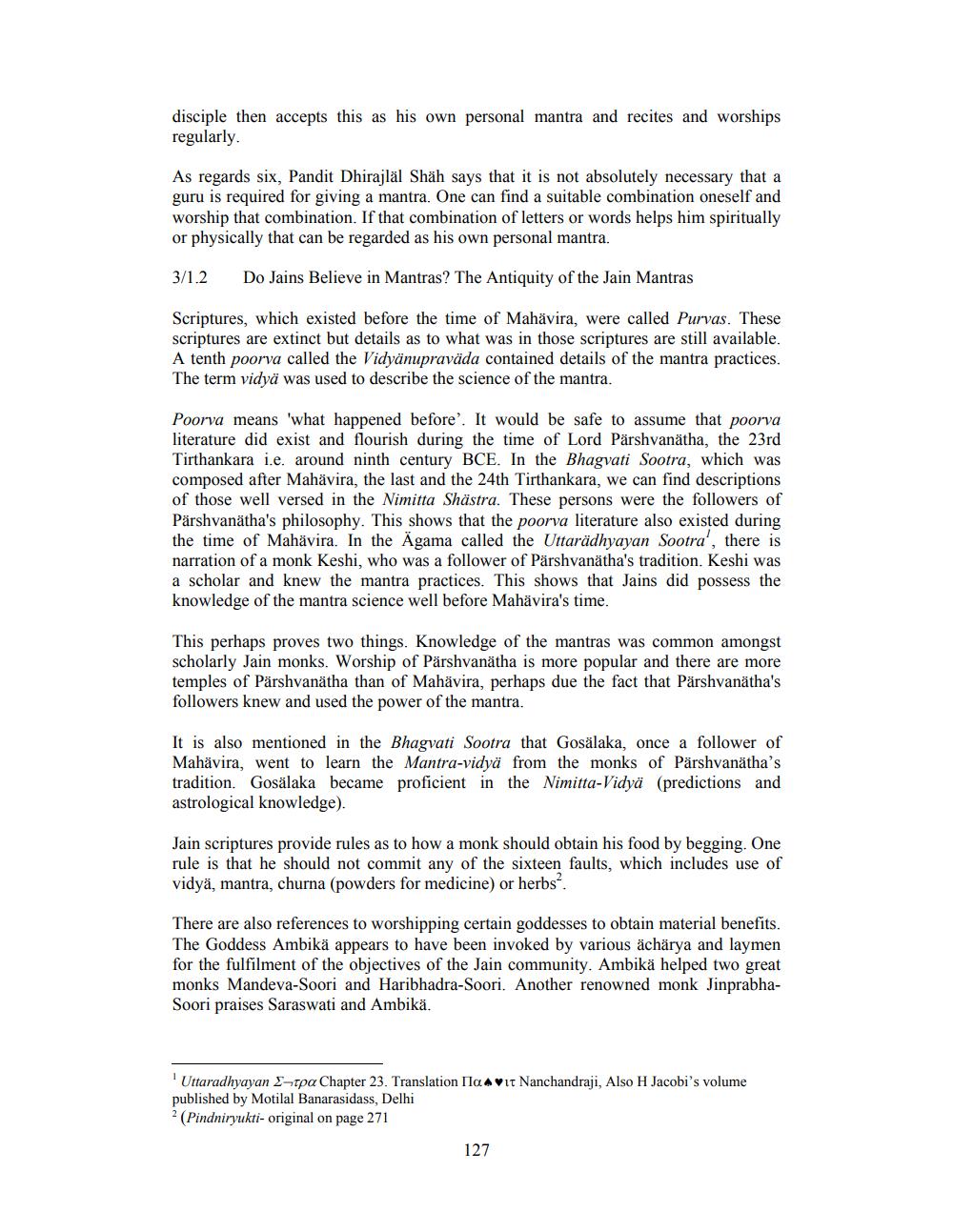________________
disciple then accepts this as his own personal mantra and recites and worships regularly.
As regards six, Pandit Dhirajläl Shah says that it is not absolutely necessary that a guru is required for giving a mantra. One can find a suitable combination oneself and worship that combination. If that combination of letters or words helps him spiritually or physically that can be regarded as his own personal mantra.
3/1.2 Do Jains Believe in Mantras? The Antiquity of the Jain Mantras
Scriptures, which existed before the time of Mahävira, were called Purvas. These scriptures are extinct but details as to what was in those scriptures are still available. A tenth poorva called the Vidyänupraväda contained details of the mantra practices. The term vidyä was used to describe the science of the mantra.
Poorva means 'what happened before'. It would be safe to assume that poorva literature did exist and flourish during the time of Lord Pärshvanätha, the 23rd Tirthankara i.e. around ninth century BCE. In the Bhagvati Sootra, which was composed after Mahavira, the last and the 24th Tirthankara, we can find descriptions of those well versed in the Nimitta Shästra. These persons were the followers of Pärshvanatha's philosophy. This shows that the poorva literature also existed during the time of Mahävira. In the Agama called the Uttarädhyayan Sootra', there is narration of a monk Keshi, who was a follower of Pärshvanätha's tradition. Keshi was a scholar and knew the mantra practices. This shows that Jains did possess the knowledge of the mantra science well before Mahävira's time.
This perhaps proves two things. Knowledge of the mantras was common amongst scholarly Jain monks. Worship of Pärshvanätha is more popular and there are more temples of Pärshvanatha than of Mahävira, perhaps due the fact that Pärshvanatha's followers knew and used the power of the mantra.
It is also mentioned in the Bhagvati Sootra that Gosälaka, once a follower of Mahävira, went to learn the Mantra-vidyä from the monks of Pärshvanatha's tradition. Gosälaka became proficient in the Nimitta-Vidyä (predictions and astrological knowledge).
Jain scriptures provide rules as to how a monk should obtain his food by begging. One rule is that he should not commit any of the sixteen faults, which includes use of vidyä, mantra, churna (powders for medicine) or herbs2.
There are also references to worshipping certain goddesses to obtain material benefits. The Goddess Ambikä appears to have been invoked by various ächärya and laymen for the fulfilment of the objectives of the Jain community. Ambikä helped two great monks Mandeva-Soori and Haribhadra-Soori. Another renowned monk JinprabhaSoori praises Saraswati and Ambikä.
Uttaradhyayan Etpa Chapter 23. Translation Пait Nanchandraji, Also H Jacobi's volume published by Motilal Banarasidass, Delhi
2 (Pindniryukti- original on page 271
127




